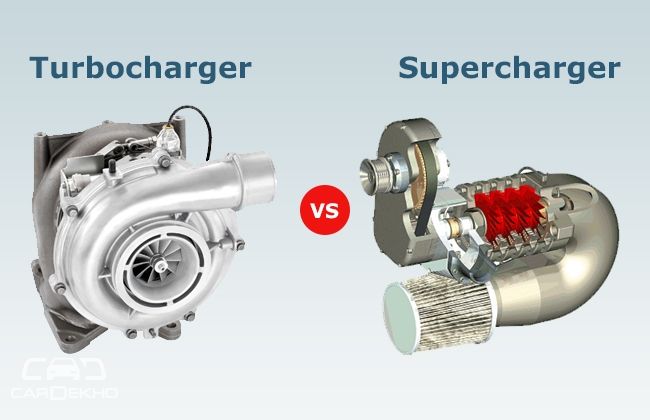The what and how of Turbochargers and Superchargers
ಡಿಸೆಂಬರ್ 19, 2014 10:28 am firdaus ಮೂಲಕ ಮಾರ್ಪಡಿಸಲಾಗಿದೆ
- ಕಾಮೆಂಟ್ ಅನ್ನು ಬರೆಯಿರಿ
You must have often heard automotive nerds talking of terms like turbochargers and superchargers. And from the sound of it, you guess that it has something to do with enhancing the performance of the car. That’s right; both these exotic sounding equipments are designed for car engines to perform more efficiently using the existing power they have. But what is the difference between the two? How do turbochargers and superchargers function? We help you understand the technicalities of these machines in a simplified manner.

Both turbochargers and superchargers are called forced induction engines. Their primary function is to force air into the engine. Since there is more air entering the engine, there will be more combustion with fuel will results in enhanced power delivery.
Difference between turbochargers and superchargers
| Turbocharger |
Supercharger |
| A turbocharger is driven by the exhaust gases released from the engine, which are then compressed and fed back into the engine. Exhaust gases drive a turbocharger |
A supercharger is connected to the crankshaft and is driven by the engine in order to pump more air Engine power drives the supercharger |
| A turbocharger is fitted on the exhaust outlet of the engine. | A supercharger is fitted on the air inlet of the engine. It is connected to the crankshaft (which is connected to the engine) via a belt, shaft, gear or chain |
| Since the air is compressed and then fed into the engine, it means slight delay for the turbo to kick in | Since the supercharger is attached at the crankshaft it means immediate power delivery |
| Since turbochargers are exhaust driven, there is not additional stress on the engine, which means better fuel economy | Since superchargers are driven by engine power, it means more load on the engine resulting in lesser fuel efficiency |
| Installing a turbocharger is a little complex | It is easier to install a supercharger |

How do they work?
Turbochargers
A turbocharger consists of a turbine and is bolted to the exhaust manifold of the engine. The exhaust gases pass via the turbine making it spin; the more the exhaust gases, the more the turbine spins. The other end of the turbine is connected via a shaft to a compressor. This compressor pumps the air back into the cylinders. Since the air is compressed, its temperature is high and density is low. The purpose of using these forced induction engines is to feed more air molecules into the engine. After the air is compressed, it passes through an intercooler which brings down its temperature making the air denser. This air is then fed into the engine enhancing its power output.
Some engine use two turbochargers – a small and a big one. The smaller turbine spins at a much higher rate reducing lag, the larger turbine takes over at higher speeds providing optimum boost.
Superchargers
A supercharger is connected to the inlet port of an engine. It compresses air above atmospheric pressure without creating any vacuum, thereby being able to force more air in the engine - this provides the boost required to propel the car ahead. To compress the air superchargers need to spin faster, even faster than the engine. Again, this compressed air is at a higher temperature and needs to be cooled before it can enter the engine, so post compression the air is passed via an intercooler which brings down the temperature making the air denser and optimum for combustion with fuel.
Since superchargers are directly connected to the engine they provide immediate boost, the moment you floor the pedal, while in a turbocharged car the turbo takes a while to kick in – which usually happens at high speeds and revs. Hence in a turbocharged car you feel the lag, while in a supercharged car you don’t.
Hope this article helped you understand the functioning as well as the difference between turbochargers and superchargers. Tune in to our auto guide section for more such information.















